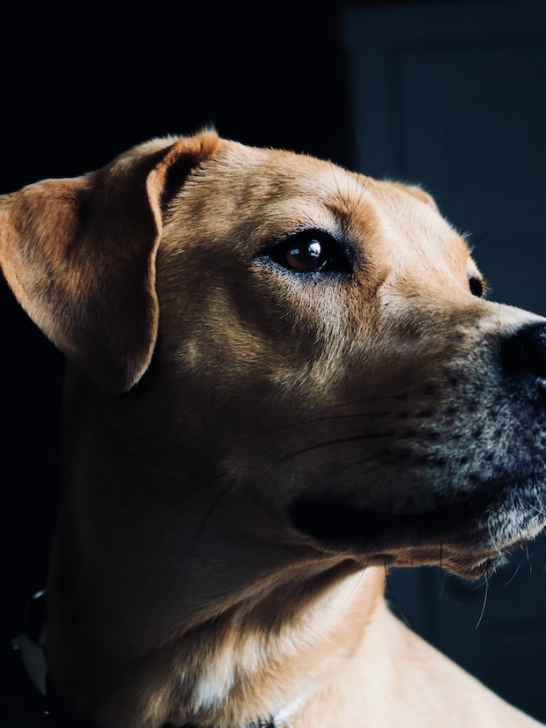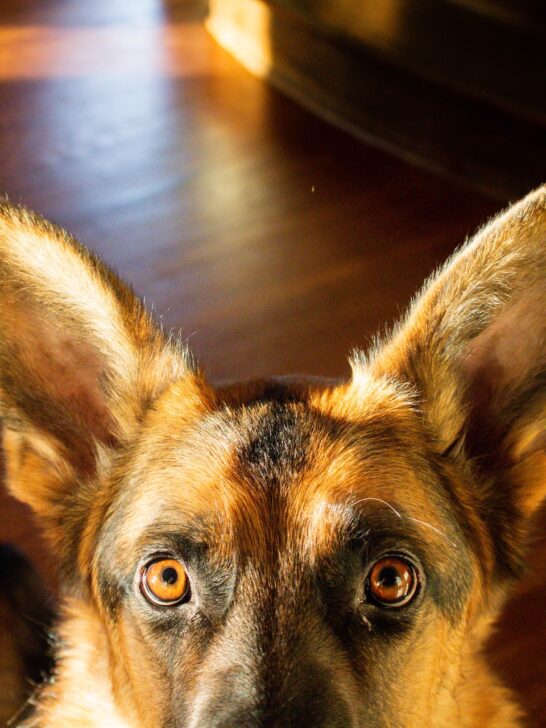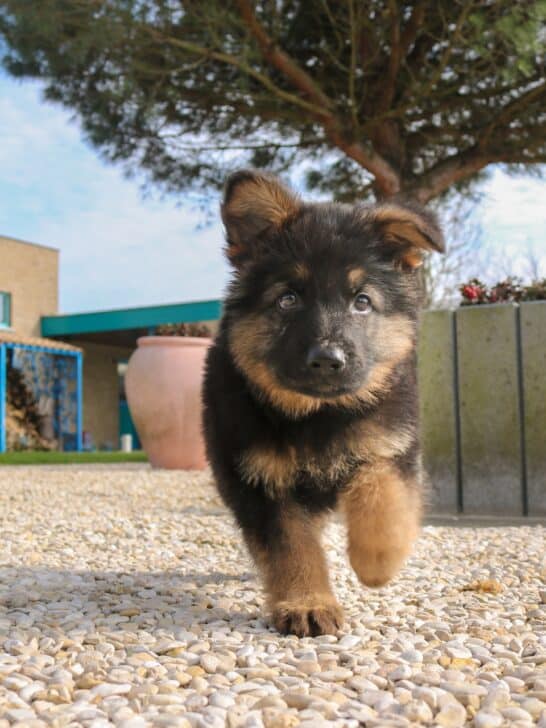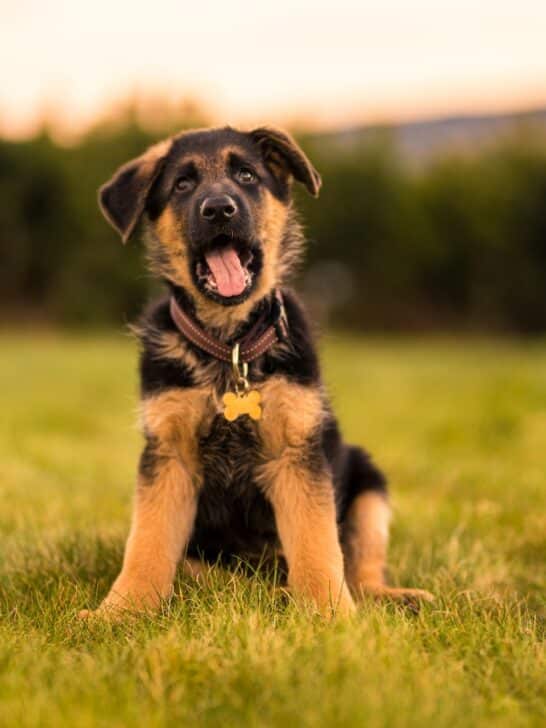What is the Best Length of Time I should Walk My German Shepherd Puppy?
If you own a German Shepherd, you probably don’t walk him at all but instead, put him through his paces rigorously.
However, exercise requirements for German Shepherd puppies are quite different than those of adults. But this doesn’t only relate to the obvious size difference.
It is highly recommended to implement an organized exercise routine for German Shepherd puppies, and the amount of effort will vary depending on age.
There are actually links between the severity of joint abnormalities and especially hip dysplasia, with growth rate and excessive exercise.
Therefore, while you may have a bundle of energy on your hands raring to go, it is your duty to temper that enthusiasm for your puppy’s well-being.
Conversely, lack of exercise can lead to improper muscle development and also negatively impact your pup’s joints.
As a general rule, GSD puppies will need five minutes of exercise for every month of their age.
These are perfect times to explore their surrounding environment, practice training and good behavior, and socialize with others.
How much exercise does your German Shepherd puppy need?
Your puppy does not need nearly the amount of exercise an adult dog does.
Adult German Shepherds require two hours or more of exercise every day. And within that time, the duration of exercise depends on intensity.
Your dog would not spend an entire two hours performing high-intensity exercises unless in formal training.
A typical routine would include 20 to 40 minutes of rigorous exercises such as jogging, vigorous playing, or other activities.
Some examples are practicing Shutzhund, preparing for herding or agility trials, or learning search and rescue.
The remainder of the time dedicated to exercise, you should spend on training, ongoing socialization, and moderate- and low-intensity activities.
You can include warmup and cool down in a moderate or leisurely walk. Keep in mind any puppy who is not full-grown does not need to engage in rigorous exercise for extended periods.
What is the five-minute per month rule?
You cannot place your puppy’s exercise requirements in a box that fits all situations.
However, one rule that makes sense as a loose guideline, is to exercise your pup for five minutes per month of age. You can do an exercise session twice a day.
If you bring a GSD puppy home at ten weeks old, your exercise guideline would tell you to work with her for about 12.5 minutes twice a day.
A six-month-old puppy, which you may be tempted to treat as a miniature adult, should still only get about half an hour of exercise twice a day.
By 10 or 12 months, your Shepherd is up to his quota of nearly two hours split into multiple sessions during a day.
However, you should still limit jumping and long-distance running until you are sure your puppy has finished growing.
How do you know when your Shepherd puppy has stopped growing?
According to Animal-MRT, it can be 14 months before the growth plates in your German Shepherd’s long bones close.
This closure signifies your dog has finished growing and can engage in exercises that may be too strenuous for bones that are softer when lengthening.
Once growth plates close and the joints no longer have laxity from extreme youth, you can take exercise to the next level.
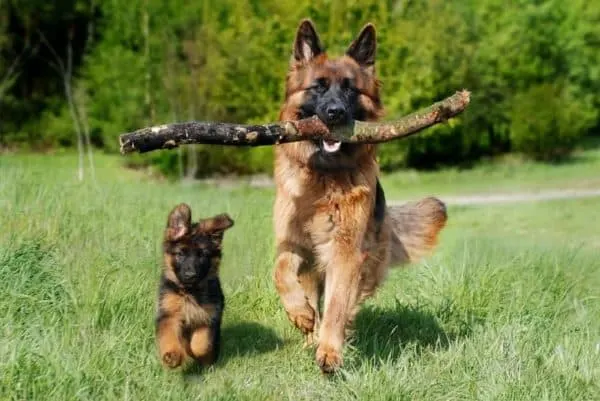
How can you tell if your Shepherd has stopped growing without a radiograph?
You really cannot tell for certain when your puppy’s growth plates close, but you will be generally safe if you wait until your dog is 14 to 18 months before starting intense work.
According to Animalso.com, German Shepherds are about 98% full grown by the time they reach a year and a half of age.
Use particular caution with certain working lines as they may not reach full maturity until the age of three years.
Even though Czech and Eastern German lines have lower incidences of hip dysplasia than show dogs, you still need to treat their growing bones with care.
Common beliefs notwithstanding, if you neuter a German Shepherd at a young age, the decrease in testosterone generally will delay growth plate closure.
You will notice that neutered male German Shepherds are often taller than their unaltered counterparts.
Therefore, assume if you neuter your dog, he will physically mature a little later. Mentally he will mature worlds ahead.
How does hip dysplasia affect German Shepherd puppies?
Hip dysplasia is a growth abnormality that affects most large-breed dogs and many small breeds as well. As you likely know, the hip is a ball and socket joint.
The ball is the head of the thigh bone or femur, and the socket is the acetabulum or cup in the pelvis.
In dysplasia of the joint, the femoral head grows at a different rate than the socket.
Rather quickly, the femoral head no longer fits correctly or congruently within the socket, affecting function and causing scrapes across the protective cartilage, according to ACVS.org.
Inappropriate looseness of the joint exacerbates the condition by allowing too much movement within the joint.
Depending on the severity, affected puppies and dogs may show mild to life-altering symptoms.
The dog’s pain depends on some molecular factors because a few with horrible abnormalities on radiographic examination may walk normally while those with mild changes can appear quite lame.
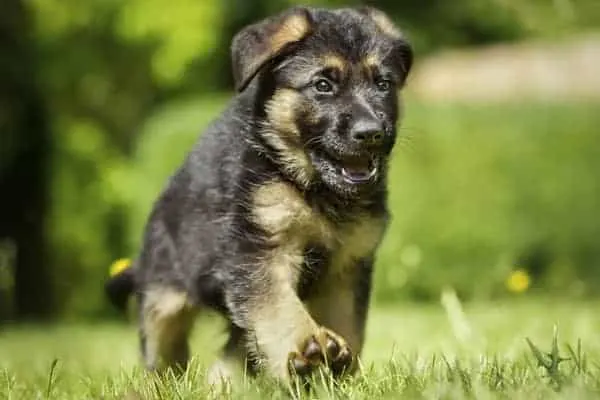
Signs of joint laxity or looseness usually occur first, although they may go unnoticed.
- Visible space between the head of the femur and the pelvis – Sometimes you can feel the excessive space when you cannot see it.
- Crying out in pain – Even if it has not progressed yet to degenerative joint disease, joint looseness can be painful.
- Abnormal gait – Your puppy may appear to bunny hop in the rear legs or exhibit other gait abnormalities that you would not classify as obvious lameness.
- Lame – Your dog will show lameness if she is in pain.
- Difficulty getting up or laying down – Your puppy may even show consistent reluctance to get up.
- Decreased interest in playing, especially if it involves running.
- Exercise intolerance – Your pup will play, but not for as long as you would expect. Maybe your dog seems to tire easily.
- Difficulty negotiating stairs – Joint looseness greatly affects the athleticism of your dog.
- Will not sit square – Many trainers advocate you enforce your dog sitting square as a sign of true obedience. Dogs with hip issues, they are unable to sit comfortably unless their hind legs are to one side or the other.
Joint laxity can be difficult to judge in young dogs. Puppies have a greater degree of laxity than adult dogs to accommodate growth.
A veterinarian can determine if your pup’s joint looseness is a predictor of hip dysplasia, according to NCBI.
Joint laxity should limit how long you walk a German Shepherd puppy, especially one under six months old.
Joint laxity means your puppy will experience significant instability when walking, predisposing her to stumble and fall.
Signs of osteoarthritis mostly manifest as pain, dysfunction of the joints, decreased range of motion, and even grinding sounds as the leg moves.
Degenerative joint changes, believe it or not, can occur in puppies only several months old.
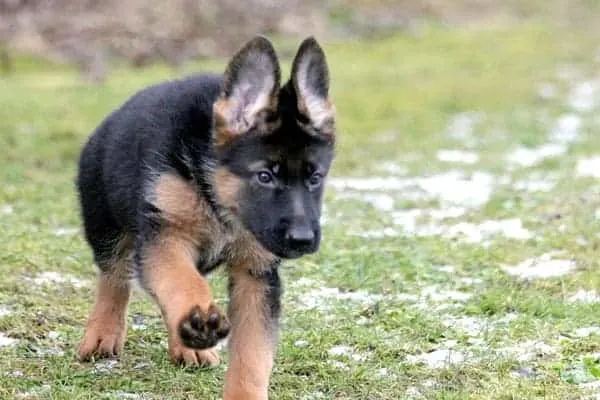
How is your puppy’s weight a factor?
German Shepherds do not typically have a problem with obesity. However, in their dog’s growing stages, well-intentioned owners can feed their pets too many calories or food too rich in nutritional value.
Although it seems counterintuitive, too much nutrition is not an ideal thing for the GSD.
If a large-breed dog grows too quickly as a puppy, he can be more vulnerable to hip dysplasia if he already carries the genes.
The dilemma comes with balancing exercise requirements and nutrition, so you have a happy and fit puppy who is not overweight but also does not overexert herself.
How does exercise affect hip dysplasia?
Although hip dysplasia has a large hereditary basis, over exercising a puppy can exacerbate the problem in a dog who might not otherwise develop any symptoms.
It is important not to allow your puppy to run excessively or jump during her growing months.
Moreover, if your puppy has excessively lax joints, overstretching during long and strenuous running or launching and landing for jumps can cause direct injury to the hips and surrounding soft tissue.
Your puppy can also injure her growth plates.
Periodic X-rays may be a good idea
The German Shepherd Dog Club of Victoria recommends you not exercise your GSD for more than five minutes per session until she is six months old.
Although we find this pretty restrictive for dogs approaching adolescence, one piece of wisdom that has value is periodic radiographs of your dog’s joints.
An X-ray at an early age gives you an idea if your puppy is already showing the effects of DJD or degenerative joint disease.
Your veterinarian may be able to advise you further if your exercise program is too strenuous for your puppy based on any changes in the joints.
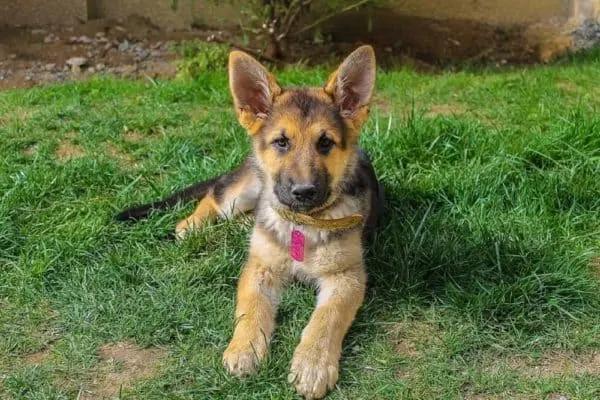
How do you know your puppy overexerted himself?
You may occasionally find that your puppy overdoes it. Perhaps you took him to a birthday party for his Labrador friend, and you did not have the heart to break up their play session.
Most of the time, a play date that gets out of hand or a walk that runs over the anticipated time allotment will not cause any permanent damage.
You can assess your pup the following day for signs of overexertion and know to take it exceptionally easy for the next day or two.
- Limping on a leg
- Wants to sleep all day – Allow her
- Difficulty getting up
- Seems sore or lethargic (lazy)
If your puppy’s symptoms persist for longer than one or two days or seem unusually severe, seek professional attention from a veterinarian.
Listen to your puppy
Although you should leash-train your GSD at a young age, starting as soon as you first bring her home, there is much to be said about freeform exercise.
The biggest benefit of your puppy exercising a good part of her time in the early month off-leash is she can self-regulate her activity.
You will notice when puppies are tired or become sore, they will stop dead in their tracks. Make sure your puppy is in a safe environment, and she can engage in fairly unrestricted exercise on her own.
When you are walking your puppy on a leash, under no circumstances should you push her to go beyond the point where you are dragging her, or she sits down and refuses to move on?
You may have to carry her the remainder of the journey.
Be aware of your dog’s changing exercise tolerance, so you do not end up not able to finish your walk, and your dog does not begin to associate outings with unpleasantness.
As your German Shepherd approaches adolescence at five to seven months old, you will have to monitor his exercise more because what he can do will begin to exceed what he should do.
Running over rolling terrain for miles or training strenuously for pursuit work is not ideal for an immature Shepherd and can be potentially harmful.
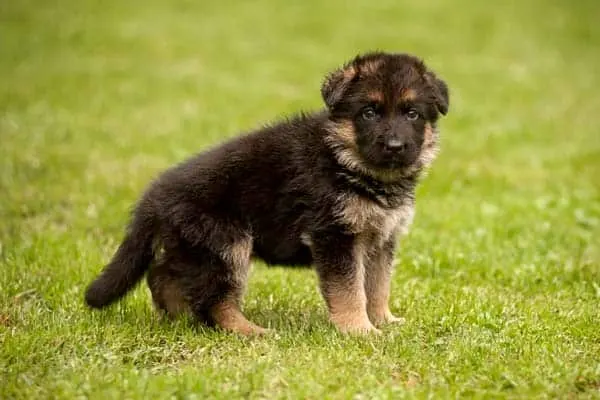
Best length of time to walk a German Shepherd puppy: you know best!
When facing the question of how long should you walk your German Shepherd, use the rough guidelines of five minutes per month of age a couple of times a day.
Otherwise, allow your pup to dictate her level of tolerance for playing and romping.
You can spend additional time with your puppy building a bond through affection and play, while still limiting duration. Your pup will need some time during the day to herself and sleep.
This video shows the progression of a puppy and how his exercise abilities change. It perfectly illustrates how the young Shepherd dictates how much exercise he can tolerate.
Notice, in the beginning, the interaction with his owner is a large part dependent on easy contact.
As the puppy progresses in age, he gradually attempts more.
If you watch puppies even three and four months old engaged in self-directed play, their actions are marked by frequent pauses to rest or think about the next move.
Rarely will you see a German Shepherd laying still, but as in the video, puppies will take time to rest if left to their own devices. Swimming is a great form of exercise, but not all German Shepherds love water.
This video shows that just because your German Shepherd puppy is not on a leash does not mean you are not walking her.
Training should take up a good portion of your walks or exercise sessions, whether on- or off-leash.
As much of a brilliant pupil as this puppy is, her session should not be longer than 15 minutes.
Notice her yawn, which can be a sign of tension or a wandering mind, indicating the exercise should move to something else or stop.


























